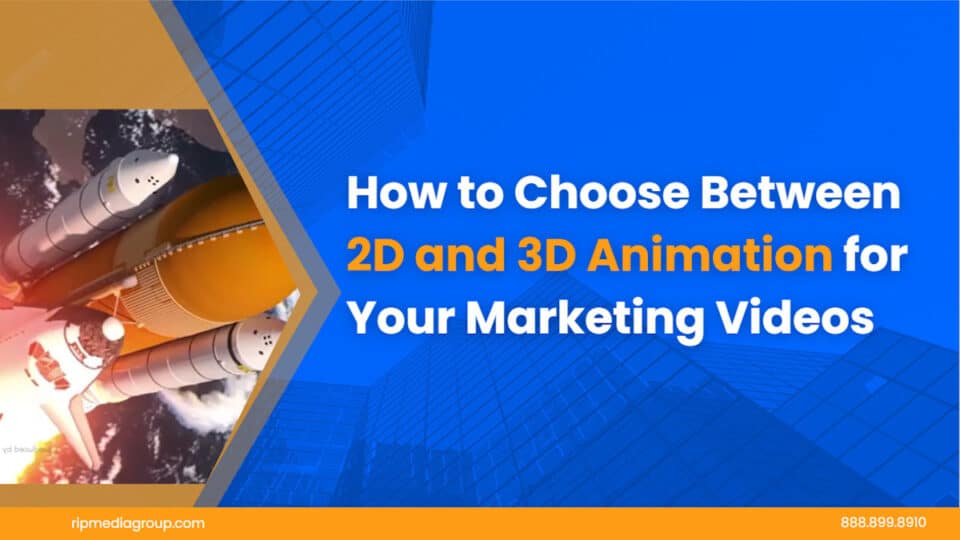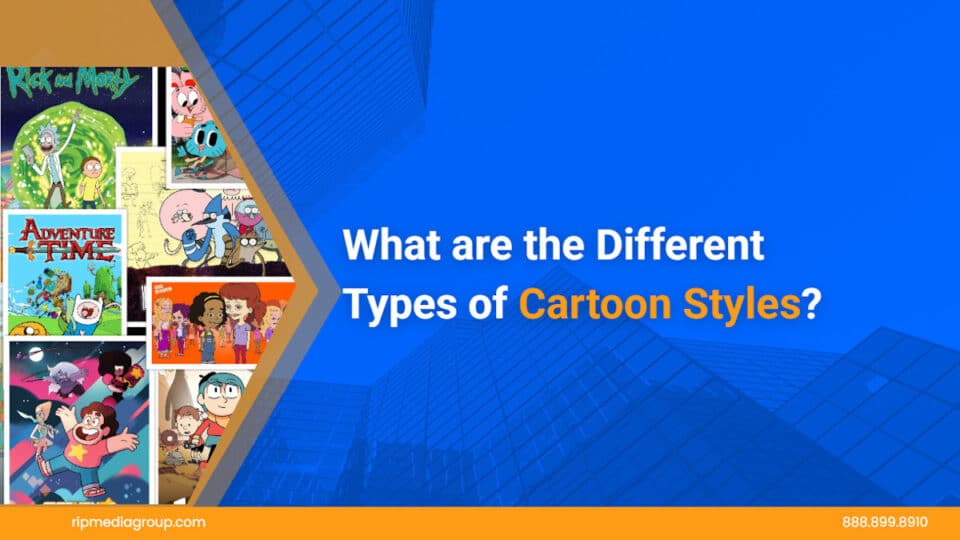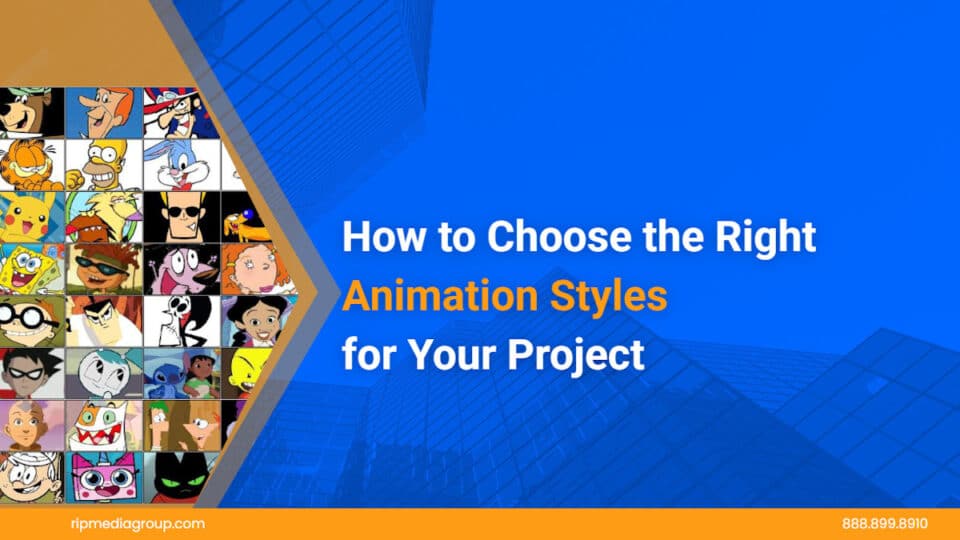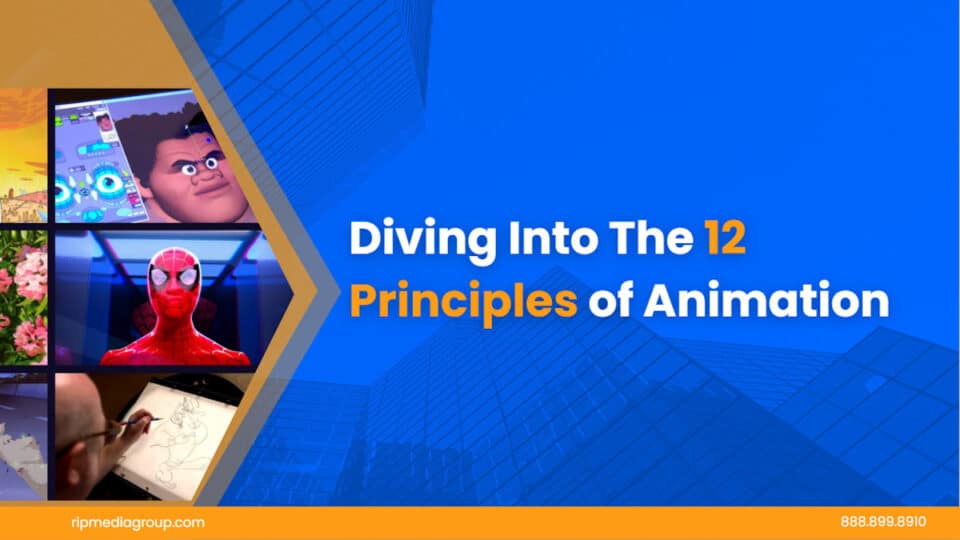When it comes to creating captivating marketing videos, animation offers a dynamic and versatile solution. However, choosing the right animation style—whether 2D or 3D—can be a critical decision that impacts your budget, timeline, and messaging. Both styles have their unique benefits and challenges. In this article, we’ll explore how to decide between 2D and 3D animation for your next video project, helping you capture your audience’s attention effectively.
What makes 2D and 3D animation different?
2D animation refers to flat, two-dimensional artwork that’s brought to life using movement and transitions. Think of 2D as the classic, traditional animation style often created using tools like Adobe Photoshop or Illustrator. On the other hand, 3D animation involves crafting three-dimensional assets that can be rotated for a complete 360-degree view, often using advanced software like Maya or Cinema 4D.
These distinct approaches to animation bring unique visual experiences to the table. 2D animations tend to feel lightweight and approachable, while 3D animations create a more immersive and dynamic atmosphere. Choosing between the two largely depends on your creative goals, audience engagement needs, and project constraints.
Advantages of 2D animation for marketing
- Cost-effectiveness: 2D animation is generally less expensive compared to 3D animation. With fewer complex processes involved, projects are often completed at a lower cost, making it ideal for brands on a budget.
- Faster production: Because it doesn’t require 360-degree modeling and texturing, 2D animation generally takes less time to produce. This makes it a great option for campaigns with tight deadlines.
- Easy updates: Over time, brands may need to modify marketing assets due to changes in product features or branding guidelines. Updating 2D animations is usually simpler and quicker.
- Multi-purpose adaptability: Elements from 2D animations can be repurposed into static assets like infographics, social media graphics, and print materials, increasing overall marketing ROI.
Challenges of working with 2D animation
The main downside of 2D animation is that it can sometimes lack depth or dimensional impact. While artists can add shading and layering to mimic a 3D look, the overall aesthetic is typically simpler, which might feel less dynamic compared to 3D visuals. Additionally, 2D animations may have limitations in capturing certain artistic details and movements.
Advantages of 3D animation for marketing
- Eye-catching realism: The ability to create detailed, three-dimensional visuals allows 3D animations to mimic real-world objects convincingly. This can make your content more memorable and engaging.
- Dynamic storytelling: With 3D animation, you can zoom, rotate, and explore assets from any angle. This dynamic storytelling approach adds visual intrigue and helps communicate complex ideas effectively.
- Positive ROI: Although 3D animation is typically more expensive, its ability to captivate audiences and deliver a high-quality visual experience often justifies the cost. Studies have shown that compelling visuals are a key driver for increasing viewer retention and conversions.
- Interactive potential: 3D graphics can be used for interactive experiences, such as product demonstrations or architectural visualizations. These features help engage users and build interest in your offerings.
Challenges of working with 3D animation
While visually stunning, 3D animation comes with its own challenges. The cost is typically higher due to the intricate work required to create and render lifelike visuals. Furthermore, 3D projects often take longer to produce because of the amount of detail involved, from modeling and lighting to shading and texturing.
Is there a middle ground? Enter 2.5D animation
If you are drawn to the aesthetic of 3D animation but constrained by time or budget, 2.5D animation might be the perfect compromise. This style uses layering and shading techniques to give 2D animations a three-dimensional effect without needing to fully model assets in 3D. It captures some of the dimensional appeal of 3D at a lower cost and with faster production times.
How to decide between 2D and 3D animation
Ultimately, your decision will depend on several factors:
- Budget and timeline: 2D animation is typically the more budget-friendly and faster option. For campaigns with short turnaround times or financial constraints, 2D might be the best choice.
- Creative goals: If your project requires rich visual storytelling, immersive effects, or detailed product renderings, investing in 3D animation may provide the creative edge you’re seeking.
- Marketing objectives: Are you looking to build long-term brand awareness or create evergreen content? Both 2D and 3D animations have long shelf lives but offer different advantages for engaging various audiences.
- Adaptability: Consider whether elements of your animation will need to be repurposed across other marketing channels like social media, websites, or print materials.
Final thoughts: Which animation style suits your brand?
Both 2D and 3D animations are powerful tools that add a creative flair to marketing videos. Choosing the right style is less about which is better and more about which aligns best with your project goals, constraints, and audience preferences.
At Rip Media Group, we specialize in creating compelling animations tailored to meet your needs. Whether you’re leaning toward 2D, 3D, or even 2.5D styles, we can guide you through the process to ensure your video aligns perfectly with your brand’s story.
Are you ready to explore how animation can elevate your marketing efforts? Contact Rip Media Group today to get started on your next standout video project.






